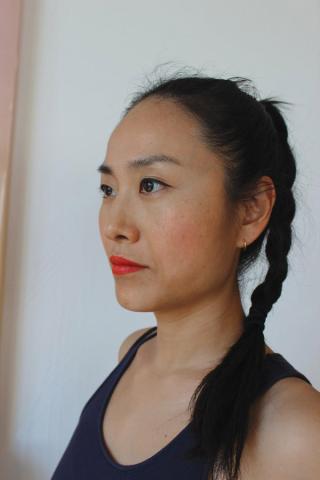Anassa Kata: Mika Tajima '97
I’ve always been the black sheep of the family.
Childhood ambition?
It’s no surprise that I wanted to be an artist. My mother says that I have been drawing since I could hold a pencil. But veterinarian was also on the list.
Path to Bryn Mawr?
I wanted to go to art school, but my parents—who are both academics— insisted I get a liberal arts education. I was attracted to the Seven Sisters for the community of women and feminist viewpoint, so I applied to several but ultimately chose Bryn Mawr for its ethical and progressive core, small size, and proximity to Philadelphia. It worked out well for me: I double-majored in fine arts and East Asian studies, which gave me a strong background in contemporary and conceptual art. Internships at the Institute of Contemporary Art and a printmaking gallery in Philadelphia rounded out my education.
How does your Bryn Mawr education influence your work as an artist?
At Bryn Mawr, I learned to challenge information—history, stories, even studies—as constructs of subjective viewpoints rather than objective occurrences. And because a Bryn Mawr education is based on discourse and debate, and its student body is globally diverse, I was exposed to all kinds of perspectives. All of that feeds directly into my work, where I try to provide opportunities for reflexivity to understand how the built environment, both physical and invisible, shapes, influences, changes, and manipulates our identities as individuals.
Favorite Bryn Mawr memory?
The mass deluge of students at the computer center in Guild Hall during the last few weeks of each semester. Many of us didn’t have computers back then, so we’d camp out there, day and night, with our pillows, blankets, and stashes of snacks. It was great camaraderie.
Tell us about your latest work.
I’ve been really fascinated by technology, especially artificial intelligence, as a metaphor for how we are influenced and defined by things we can’t know or see. At the 2019 Okayama Art Summit, I debuted a piece that uses machine learning to visualize the formation of new synthetic human subjectivities. I worked with several computer programmers to develop an algorithm that animates a pool of black ferrofluid by sending signals to an electromagnetic grid underneath. The liquid is a metaphor for all the possibilities of who we can be and how we are constantly changing but also conforming to the shape of our “container,” i.e., society, labels. But identities are fluid, the way gender is currently being expanded beyond its biological definition. This piece is a meditation on that and links directly back to what I learned at Bryn Mawr.
How have you defied expectation?
I’ve always been the black sheep of the family: Dad is a physicist, Mom is a geophysicist, and my brother was always into math and science. So, I guess I defied expectation by following through and being true to my artistic self. That said, my brother recently pointed out that I’m becoming more like our parents: entranced with science and technology. Even though I don’t have the STEM background, I love the metaphors intertwined in the disciplines and feel the need to critique the adoption of this new regime—life cannot be fully quantified.
Published on: 01/13/2020

